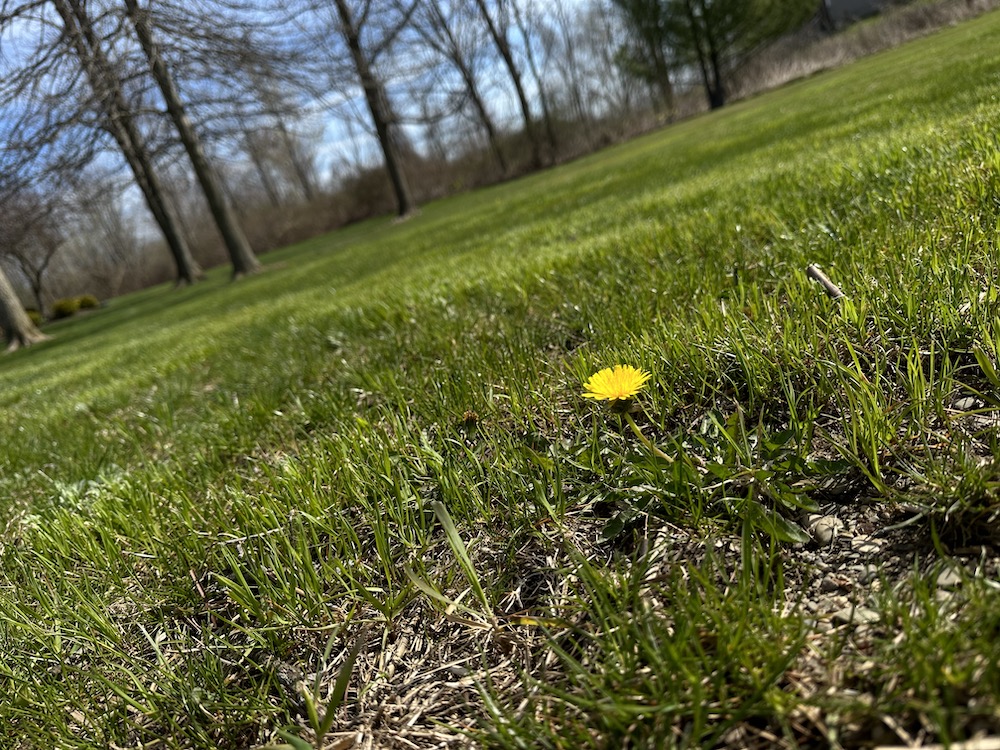
5 Common Weeds Found in Northeast OH and How to Get Rid of Them
Weeds are never fun additions to your Northeast Ohio lawn.
They show up looking nasty in your otherwise perfect grass, casting blemishes on your whole yard. And weeds tend to double once they appear, making your lawn look like a breeding ground for those tall, spiny eyesores.
Actually, thousands of weed seeds can survive in the soil for years before they germinate and grow in your grass, so you’re not imagining things when they appear and seem to multiply overnight. Those seeds are just taking the opportunity to germinate when conditions are just right.
In your quest to battle weeds, you want to know which ones you’re fighting to eliminate them properly. Since every weed is unique, each one has different methods of control to ensure they don’t return. Some are best controlled before they emerge, while others are best handled afterward.
/TurfPrideSpring2022(WebOptimized)-197.jpg?width=5168&height=2912&name=TurfPrideSpring2022(WebOptimized)-197.jpg)
Let’s look at common weeds in Ohio so you can better understand which weed you’re seeing in your grass so you can better prepare your weed management plans.
Top 5 Common Weeds in Ohio
Weeds are sneaky. They like to pop up whenever they get the chance. You don’t want those weeds emerging throughout the growing season, taking away from the overall beauty and enjoyment of your Northeast Ohio lawn.
Here, we’ll dive into those common weeds in grass you might find and give you some tips to get rid of them for good.
1. Crabgrass
Crabgrass starts germinating in the soil during the spring. If left uncontrolled, it rears its ugly head in June and July.
Crabgrass is the monster of Ohio weeds. It boldly bursts into thin, weak lawns that don’t receive enough water or nutrients, taking over. And it is aggressive; in fact, each plant can produce 75,000 seeds. Thick crabgrass patches can even bully out weak lawn patches and then leave bare areas in its wake that you have to tend to later with some overseeding. The numerous crabgrass seeds and weakening of the lawn only exacerbate the problem come next spring and summer.
This is the only weed on the list where pre-emergent weed control is the best way to get a head start on stopping crabgrass before it starts. However, it’s common to have breakthroughs along lawn edges or in thin spots. Post-emergent crabgrass control can help with these breakthroughs.
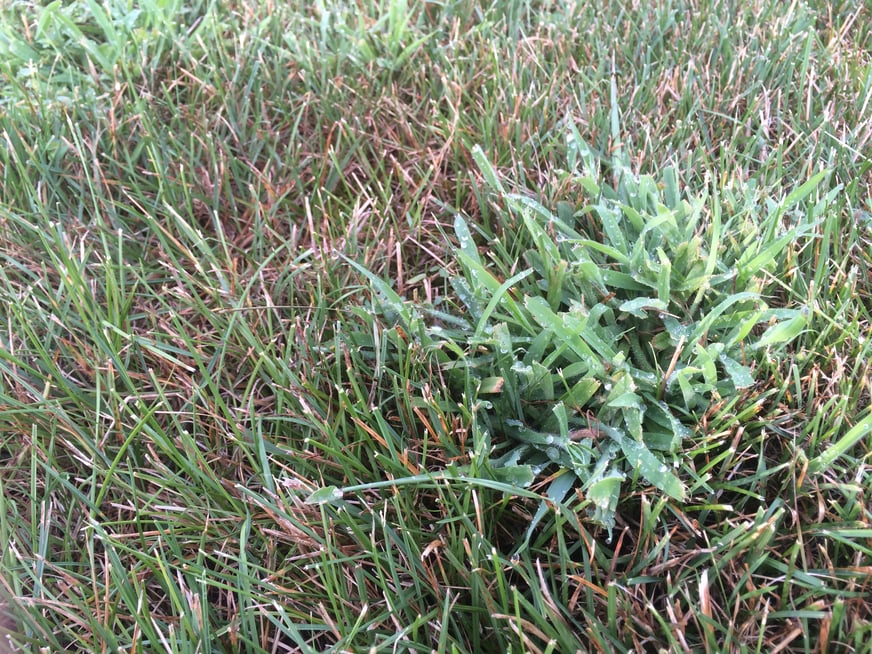
2. Wild Violet
Little purple flowers might be nice in perennials or annuals in your landscape beds, but they are not as welcome when you’re seeing them on weeds in your grass.
Wild violet is a stubborn perennial weed that shows up in Ohio lawns in May. This common weed in grass has waxy, heart-shaped leaves with serrated edges.
They prefer moist, shady areas or even partly sunny spots, and their dense root systems means they can spread quickly through your lawn. You’ll want to tackle wild violet with commercial grade, selective herbicide.
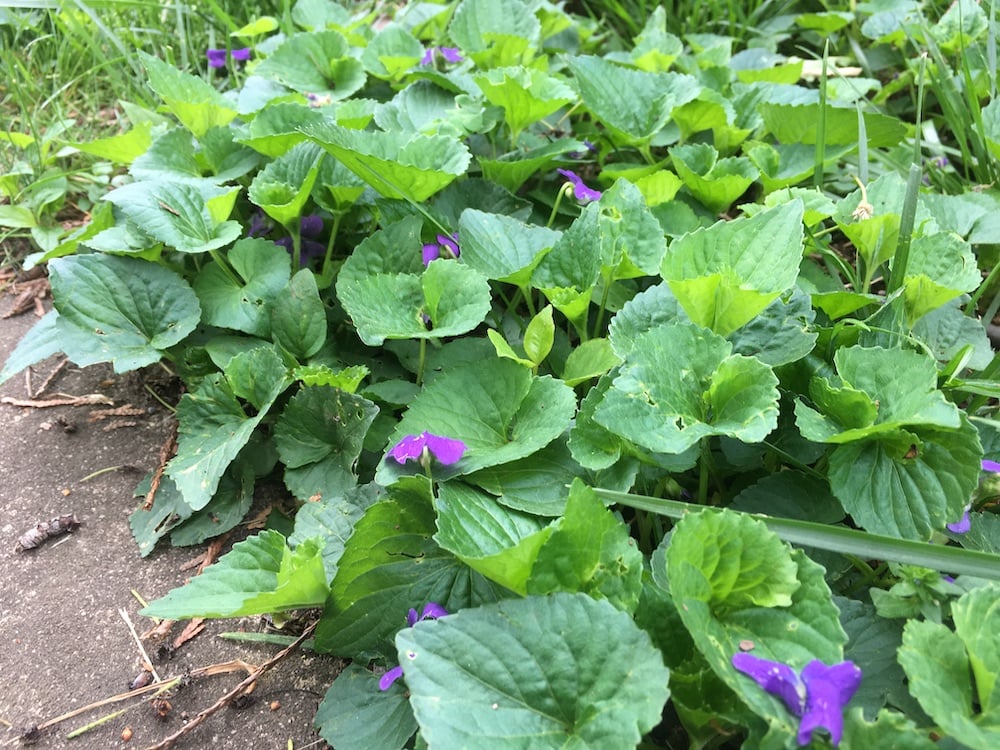
3. Oxalis
Think you’re seeing clover in your lawn? It might actually be oxalis, which takes advantage of bare areas in your grass to show itself.
Also called yellow wood sorrel, oxalis is a type of weed in Ohio that has heart-shaped leaflets and five-petaled yellow flowers and likes shady, moist locations.
Selective herbicide can help tackle oxalis.
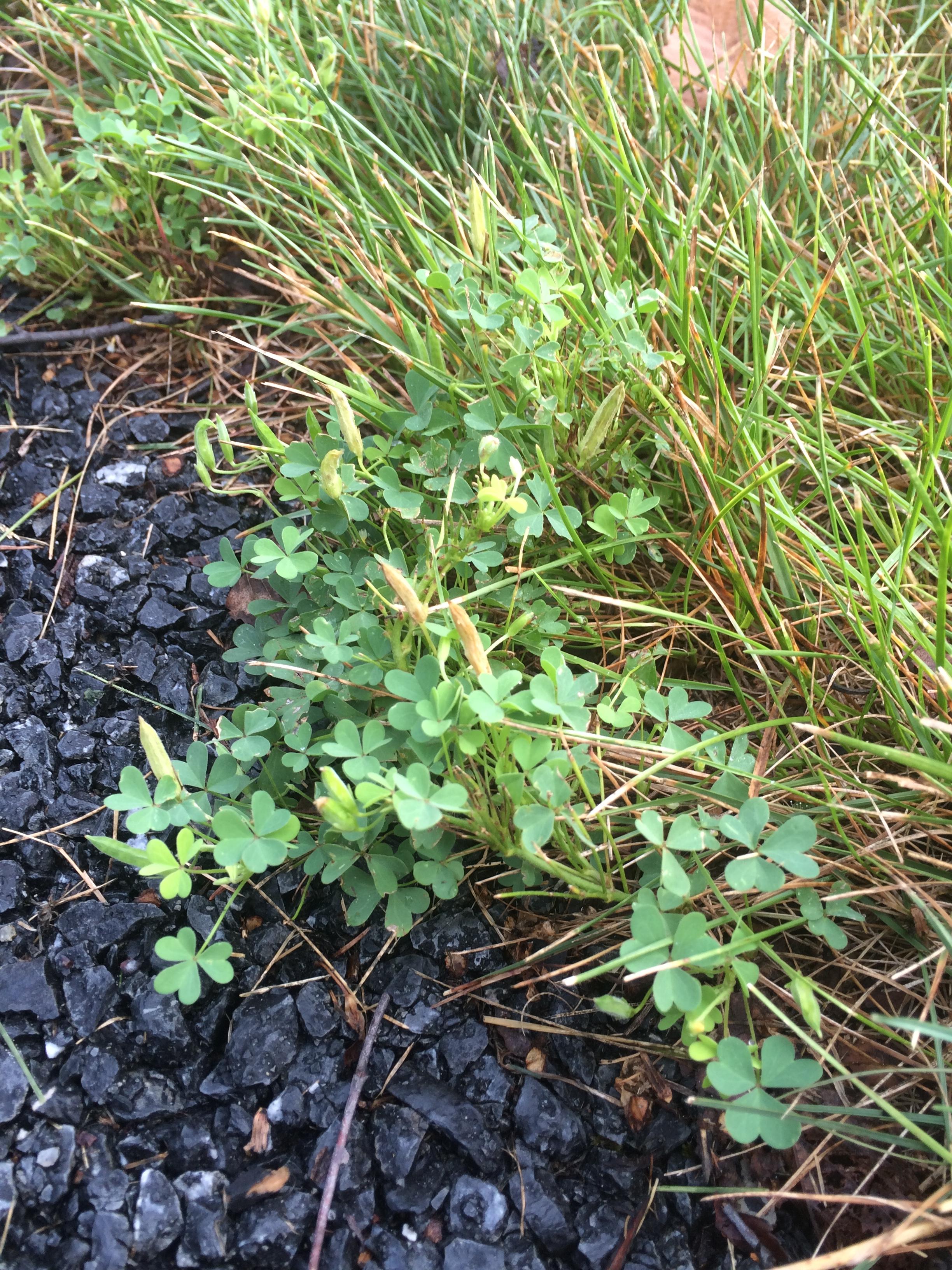
4. Ground Ivy
Ground ivy is one aggressive type of weed in Ohio.
In Northeast Ohio, you’ll see this low-growing weed crop up in shady spots during May and June. Sometimes called creeping Charlie, this Ohio invasive weed is aggressive.
With fuzzy, scalloped leaves and small lavender flowers, this perennial weed returns annually, and since it can grow multiple sets of roots, controlling it can become a challenge.
Professional lawn care operators will use a selective herbicide multiple times to manage this weed.
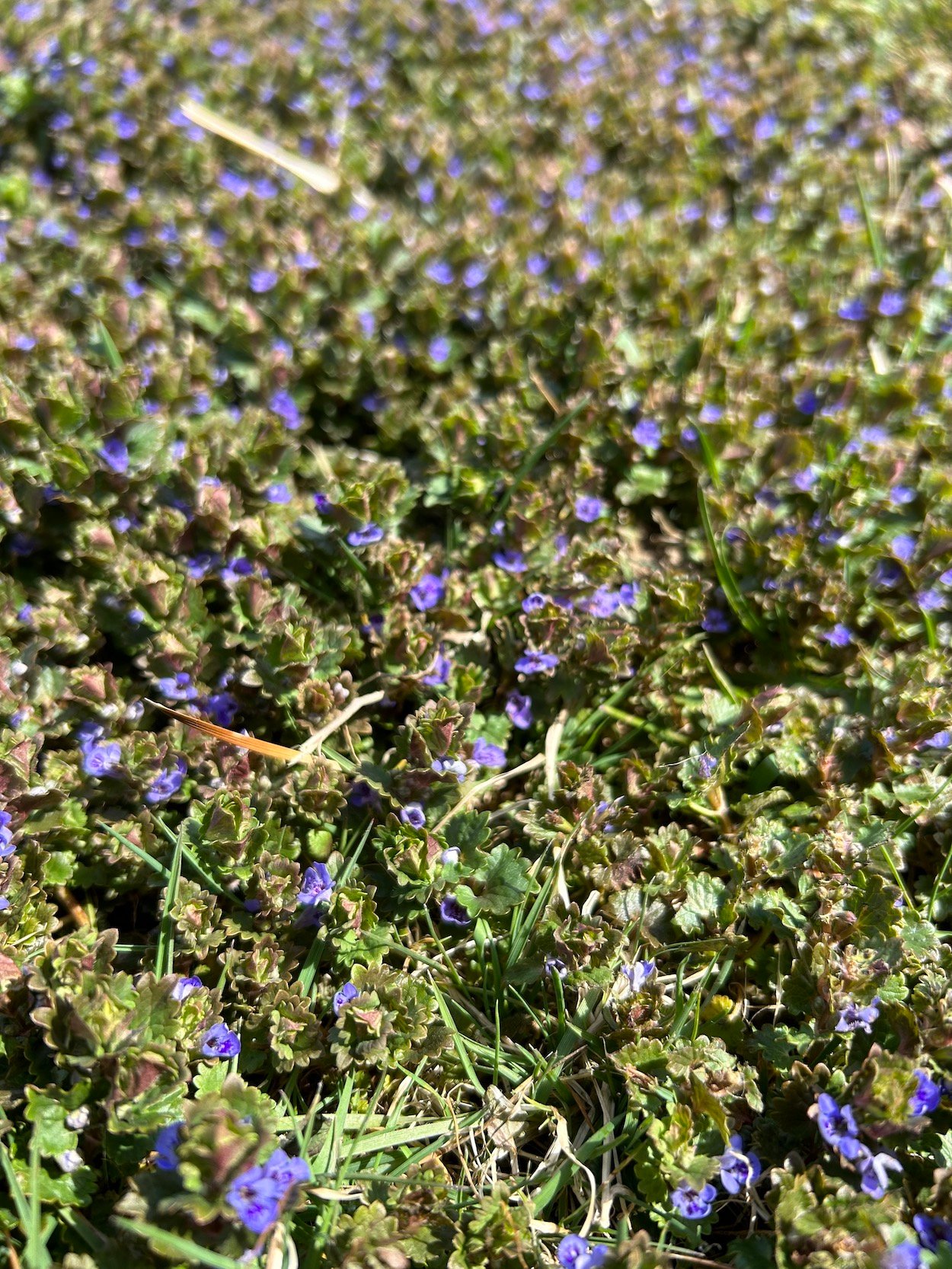
5. Nutsedge
Notice a pale greenish-yellow weed growing taller than your regular grass? That’s nutsedge. And it likes to show up in mid-summer in Northeast Ohio.
You’ll find this Ohio weed in wetter areas, such as ditches or maybe where you have a broken sprinkler head on your irrigation system or drainage issues in your lawn.
Using a commercial-grade, selective liquid herbicide can help in gaining control of this weed.
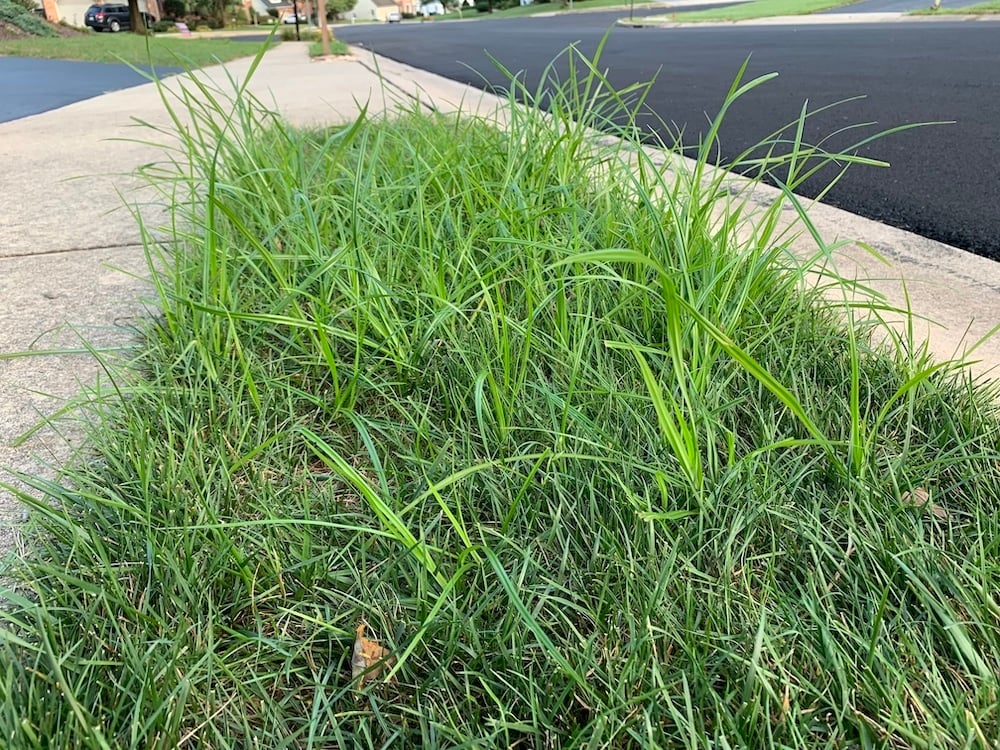
Get Rid of Weeds With a Healthy Lawn
A thin, weak lawn is more susceptible to weed infestation. So you want to do the things that can make your lawn thicker and healthier to prevent common weeds in Ohio from taking over.
This means mowing to a 3.5- to 4-inch height, watered appropriately (not too much and not too little) and adding the proper balance of nutrients through regular fertilization. Annual aeration can also help keep soil compaction down. Follow that up with overseeding to help fill in thin areas.
/TurfPrideSpring2022(WebOptimized)-69.jpg?width=5168&height=2912&name=TurfPrideSpring2022(WebOptimized)-69.jpg)
Ready to Fight Common Weeds in Ohio?
You want a lawn care program that focuses on year-round turf health. Since nothing crowds out weeds like thick grass, this can help you get rid of all types of weeds in Ohio.
If you feel like you’re constantly fighting lawn weeds, then it might be time to partner with a professional lawn care company in Northeast Ohio. Turf Pride can help! We deliver a customized approach to boost overall lawn health and get rid of these common weeds. Then you can enjoy a nicer looking, healthier lawn as a result.

Is waging war on weeds keeping you from having a lawn you can be proud of? Turf Pride would love to learn more about your lawn challenges. Get started today with a free quote. Together, we’ll prepare a customized plan that leads you to the best choice for you and your lawn.


